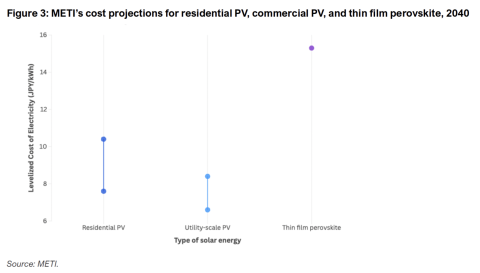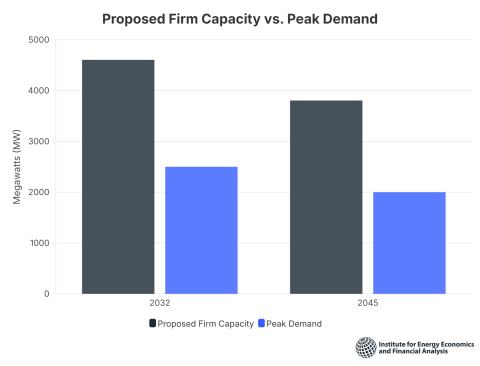Solar surge set to drive much of remaining Texas coal-fired fleet offline
Download Full Report
View Press Release
Key Findings
Coal-fired power generation in Texas, pummelled by clean, no-fuel-cost wind over the past 10 years, is about to be hit by a second wave of competition from renewables as utility-scale solar power, which is still only a small component of the state's generation mix, stands to gain significant market share over the next few years.
The report details also how wind-fired generation has set the stage for the rise of utility-scale solar, in effect delivering a one-two punch to a coal fleet that is down to 11 plants and will number 10 by October.
The report also underscores the importance of the rise in battery-storage technology, which is evolving quickly and is being adopted by a growing number of utilities and independent power producers.
Executive Summary
Coal-fired power generation in Texas, pummelled by clean, no-fuel-cost wind over the past 10 years, is about to be hit by a second wave of competition from renewables as utility-scale solar power, which is still only a small component of the state’s generation mix, stands to gain significant market share over the next few years.
While installed solar power capacity in the U.S. has grown by almost 4,000% over the past 10 years, its growth rate in Texas—specifically across the vast footprint of the Electric Reliability Council of Texas (ERCOT), has been even faster, with installed capacity increasing from just 15 megawatts (MW) in 2010 to 2,281MW at the end of 2019, a 15,107% increase. ERCOT’s installed capacity could climb at a comparable annual rate this year, with current projections showing solar topping 5,800MW by the end of 2020.
Because Texas is a highly competitive electricity market, utility-scale solar will deal a potentially crippling blow to the 11 remaining coal-fired generators across ERCOT, where the surge described in this report will almost certainly and irreversibly alter the market’s daily dynamics.
Last year, solar for the first time supplied 1% of ERCOT’s overall generation, just three years after the grid operator began independently tracking solar generation. That market share is likely to double this year, driven by the continuing surge in new capacity.
Even though solar is still a small percentage of ERCOT’s overall numbers, both in terms of generation and installed capacity, it is beginning to have a noticeable impact. This June, for example, solar generation supplied 4-5% of daytime electricity demand on many occasions. Given its low cost, and given the Texas grid’s energy-only business model, which pays for electricity produced rather than mere generation capacity, solar is gaining—and will continue to gain—market share. This will come at the expense of more costly generation, most likely coal-fired, which will be backed out of the ERCOT generation mix by a comparable amount.
This is clear in ERCOT’s generation figures from this year through the end of June. Overall, ERCOT demand has increased slightly since last year, even with the pandemic and the oil price collapse. But there is a much bigger story behind these grid-wide totals. So far this year, coal-fired generation has fallen across ERCOT by more than 8.6 million megawatt-hours (MWh), while solar and wind generation has increased by just over 8.5 million MWh, an increase of almost 21%.
This is a harbinger. IEEFA research shows that the nascent daytime threat posed by rising solar capacity to the ERCOT system’s 11 remaining coal-fired coal plants is going to increase rapidly over the next two years.
By calculating the capacity factor of the state’s existing solar capacity during two test periods in 2020, we were able also to calculate the expected generation from the capacity that is currently being built in ERCOT and will be online by Jan. 1, 2022.
These calculations yield two eye-popping takeaways.
First, daily solar generation in ERCOT likely will be well above 80,000 MWh during the long days of the early summer, putting as much as 70% of ERCOT’s daytime coal-fired generation at risk—a loss of market share that would be hard to overcome.
Second, data compiled from this past January suggests that solar poses a similar daytime threat to coal even during the short daylight months of the winter. Looking specifically at generation for the month of January 2020, and overlaying expected solar generation beginning in January 2022, we found that solar could put 70% of coal’s daytime generation at risk in just two years’ time.
Coupled with expected continued increases in wind capacity, which totalled just under 24,000MW at the end of 2019 across ERCOT and is projected to top 34,000MW by the end of 2021, IEEFA sees a number of the 11 remaining ERCOT coal plants likely retiring by 2025.
The economic competitiveness of the ERCOT market makes such closures a near certainty.
Solar’s impact will be further magnified by the rise of battery-storage technology, which is evolving quickly and being adopted by a growing number of utilities and independent power producers. By enabling companies to store solar-generated power if it is not needed during the daytime, battery storage will allow firms to use that power during higher demand periods, further increasing the amount of at-risk coal-fired generation within ERCOT.
Please view full report PDF for references and sources.
















